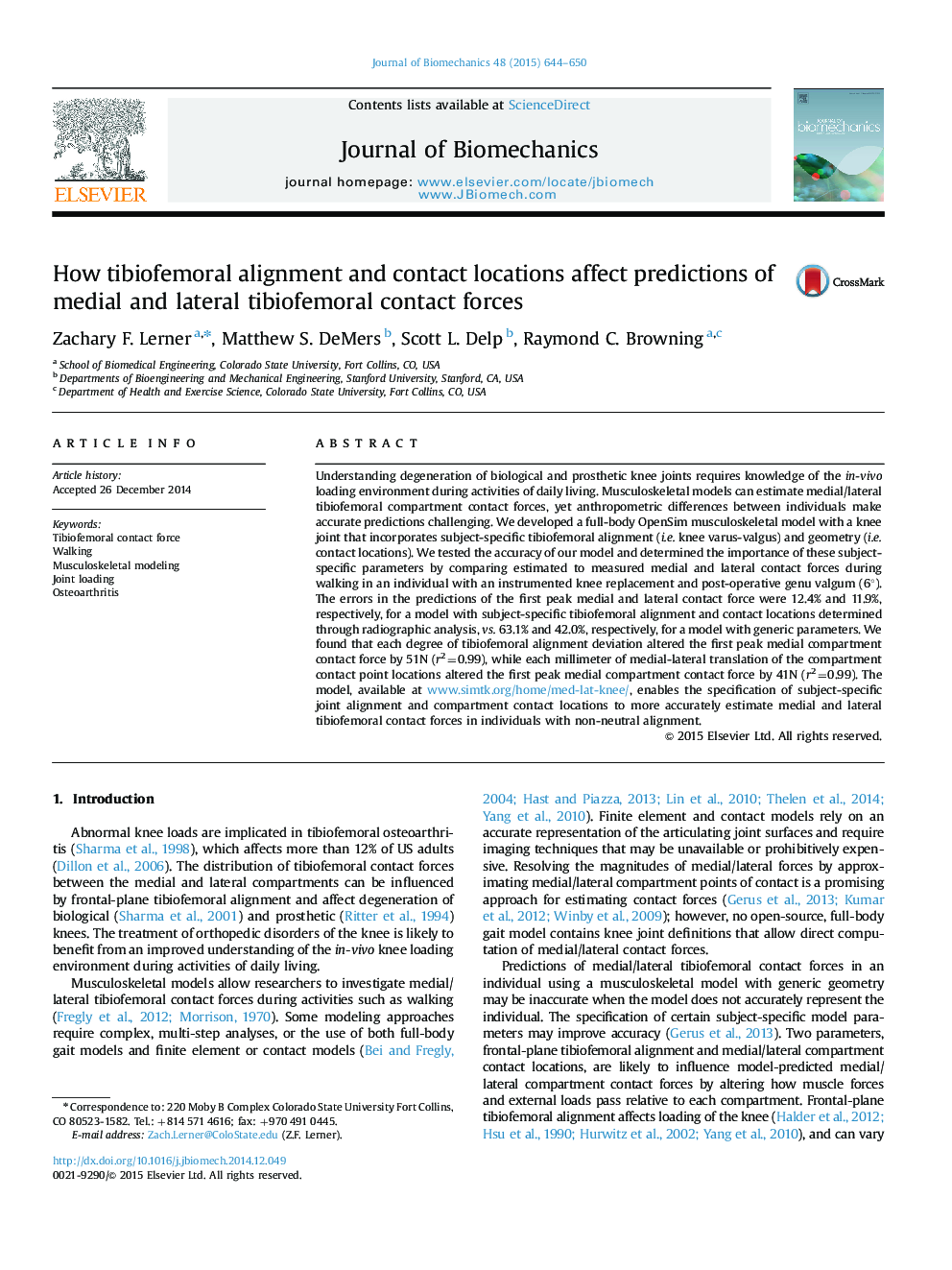| Article ID | Journal | Published Year | Pages | File Type |
|---|---|---|---|---|
| 10431726 | Journal of Biomechanics | 2015 | 7 Pages |
Abstract
Understanding degeneration of biological and prosthetic knee joints requires knowledge of the in-vivo loading environment during activities of daily living. Musculoskeletal models can estimate medial/lateral tibiofemoral compartment contact forces, yet anthropometric differences between individuals make accurate predictions challenging. We developed a full-body OpenSim musculoskeletal model with a knee joint that incorporates subject-specific tibiofemoral alignment (i.e. knee varus-valgus) and geometry (i.e. contact locations). We tested the accuracy of our model and determined the importance of these subject-specific parameters by comparing estimated to measured medial and lateral contact forces during walking in an individual with an instrumented knee replacement and post-operative genu valgum (6°). The errors in the predictions of the first peak medial and lateral contact force were 12.4% and 11.9%, respectively, for a model with subject-specific tibiofemoral alignment and contact locations determined through radiographic analysis, vs. 63.1% and 42.0%, respectively, for a model with generic parameters. We found that each degree of tibiofemoral alignment deviation altered the first peak medial compartment contact force by 51N (r2=0.99), while each millimeter of medial-lateral translation of the compartment contact point locations altered the first peak medial compartment contact force by 41N (r2=0.99). The model, available at www.simtk.org/home/med-lat-knee/, enables the specification of subject-specific joint alignment and compartment contact locations to more accurately estimate medial and lateral tibiofemoral contact forces in individuals with non-neutral alignment.
Related Topics
Physical Sciences and Engineering
Engineering
Biomedical Engineering
Authors
Zachary F. Lerner, Matthew S. DeMers, Scott L. Delp, Raymond C. Browning,
